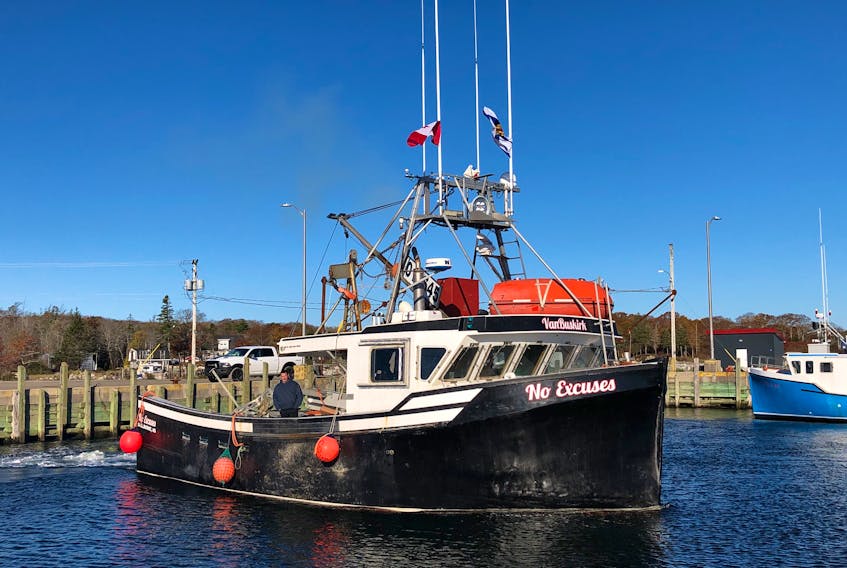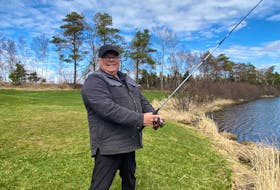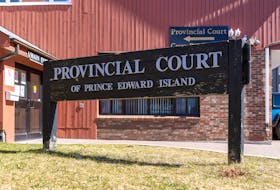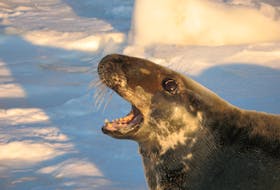“I remember hearing the wall of water coming and hitting the side of the boat and the glass smashing,” Captain Cody VanBuskirk told Saltwire in November.
VanBuskirk and the crew of the No Excuses were ten days into a sword fishing trip south of Sable Island. Despite the forecast for 40 knot winds that led them to take the evening off fishing, it wasn’t rough.
Then a wave significantly larger than any of the others smashed into the boat’s side, rolled her on her beam, caved in the wheelhouse windows.
“When I got to the wheel, I didn’t even realize it at the time, but I was up to my waist in water inside the wheelhouse,” VanBuskirk says.
“I opened up the door to let the water out and the whole back of the boat was underwater.”
Twenty-six years ago a mathematician probably wouldn’t have believed VanBuskirk’s claim he’d been hit by a rogue wave.
They were the stuff of mariners’ tales, not far removed from Davey Jones’ locker.
They didn’t make sense on paper so they probably didn’t exist.

Yes, fishing boats and even big ships disappeared suddenly in weather that shouldn’t have been their undoing. But many things can go wrong quickly at sea.
Then on New Year’s Day 1995, the Draupner oil rig was struck by a 26-metre wave that appeared out of a North Sea storm where the biggest waves were 11.8 metres high.
Unlike most ships hit by those monsters it both survived and had high resolution wave measuring equipment.
It hit the world of physics like a wall of water.
Suddenly researchers at the University of Oxford were conjuring confused seas in a wave tank trying to recreate that freak wave as physicists and matheticians sought figure out how it was possible.
Two theories would eventually emerge.
The first and simplest explanation was that when multiple waves moving in the same direction happened to come together at the same place and time the resulting effect would be like stacking them on top of each other.
Then came a real doozy called non-linear focusing which saw that a large wave can begin leaching energy from its neighbours to grow bigger and bigger.
“Basically it’s like somehow in one point in space the wave can subtract energy from its surroundings and concentrate more energy at the same point,” said Giovanni Dematteis, a researcher at the Rensselaer Polytechnic Institute in New York.
VanBuskirk could have been forgiven for not caring about the debate raging in academia as he ordered his crew into survival suits, layed the throttle down and turned the battered No Excuses to run with the sea.
What mattered to him was the effect, not the mechanism of its creation.
In a similar way, it was by thinking about the end rather than the beginning that Dematteis and a team have managed to bring the competing theories of rogue waves together.
In Experimental Evidence of Hydrodynamic Instantons: The Universal Route to Rogue Waves, Dematteis (along with fellow authors Tobias Grafke, Miguel Onorato and Eric Vanden Eijnden) do an end run around the debate of what causes these monsters of the deep.
“If you look at smaller events, there is a lot of different pathways they can be formed by,” said Dematteis.
“But if you look at a very, very large event, all the circumstances have to conspire in a precise way to allow that to happen.”
Basically, for all their uniqueness rogue waves in a particular sea state will look the same.
And the churning water in the lead up to their emergence will follow a pattern.
If you can model the wave and the pattern, you can predict the occurrence and shape of waves in a particular sea state.
Their models worked out when applied to a stormy sea created in a Norwegian wave tank.
All their math wouldn’t have helped the No Excuses. It was saved by a quick thinking Captain and crew.
The value Dematteis sees in his model will come in the future.
In the near term, it could assist engineers simulating how their hull designs perform under extreme sea states.
In the long term it could lead to a technology that monitors wave heights and shape around a ship and sounds an alarm when the pattern is spotted that has a high likelihood of leading to a rogue wave formation.
“It could give a few minutes of warning,” said Dematteis.









